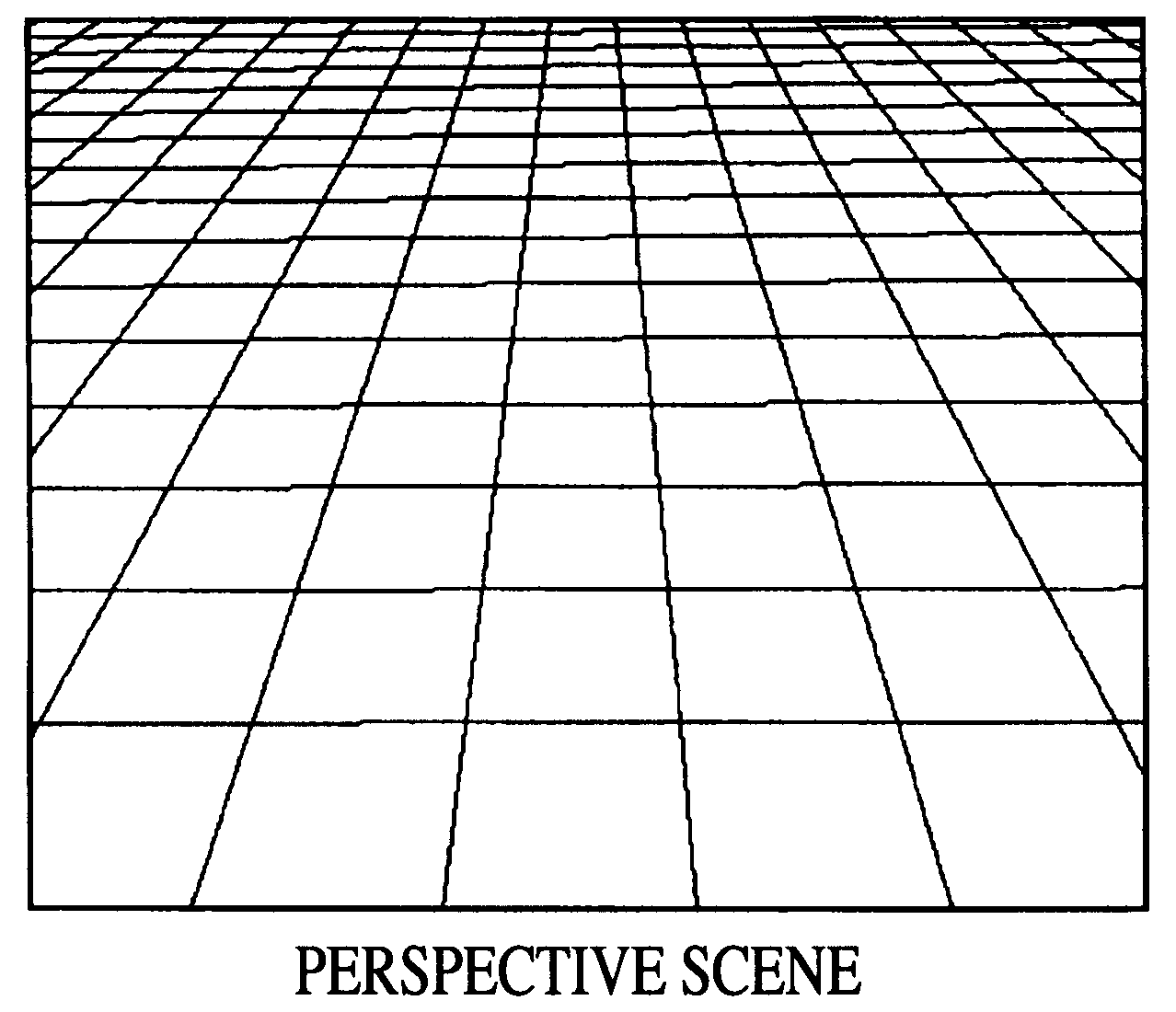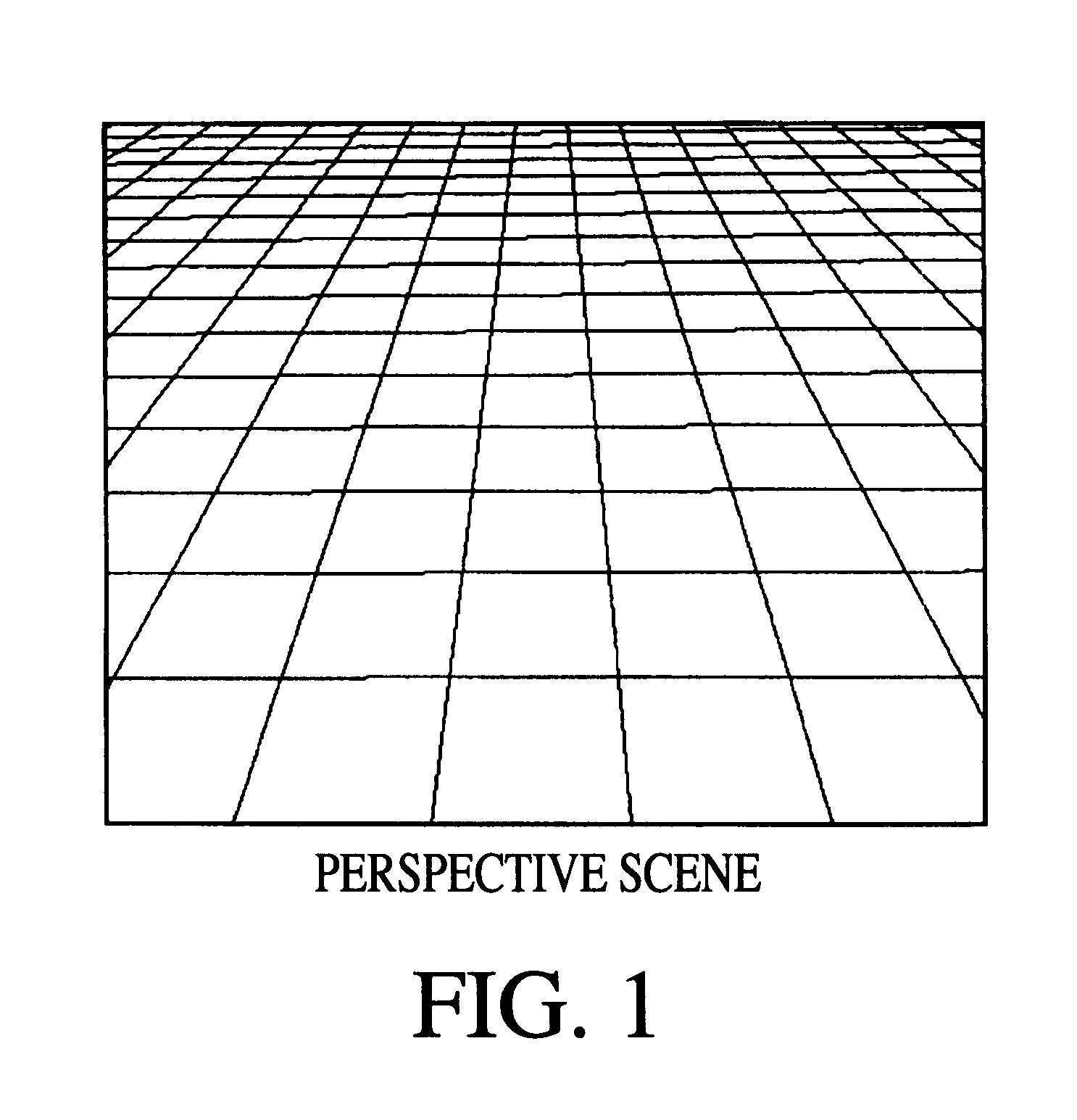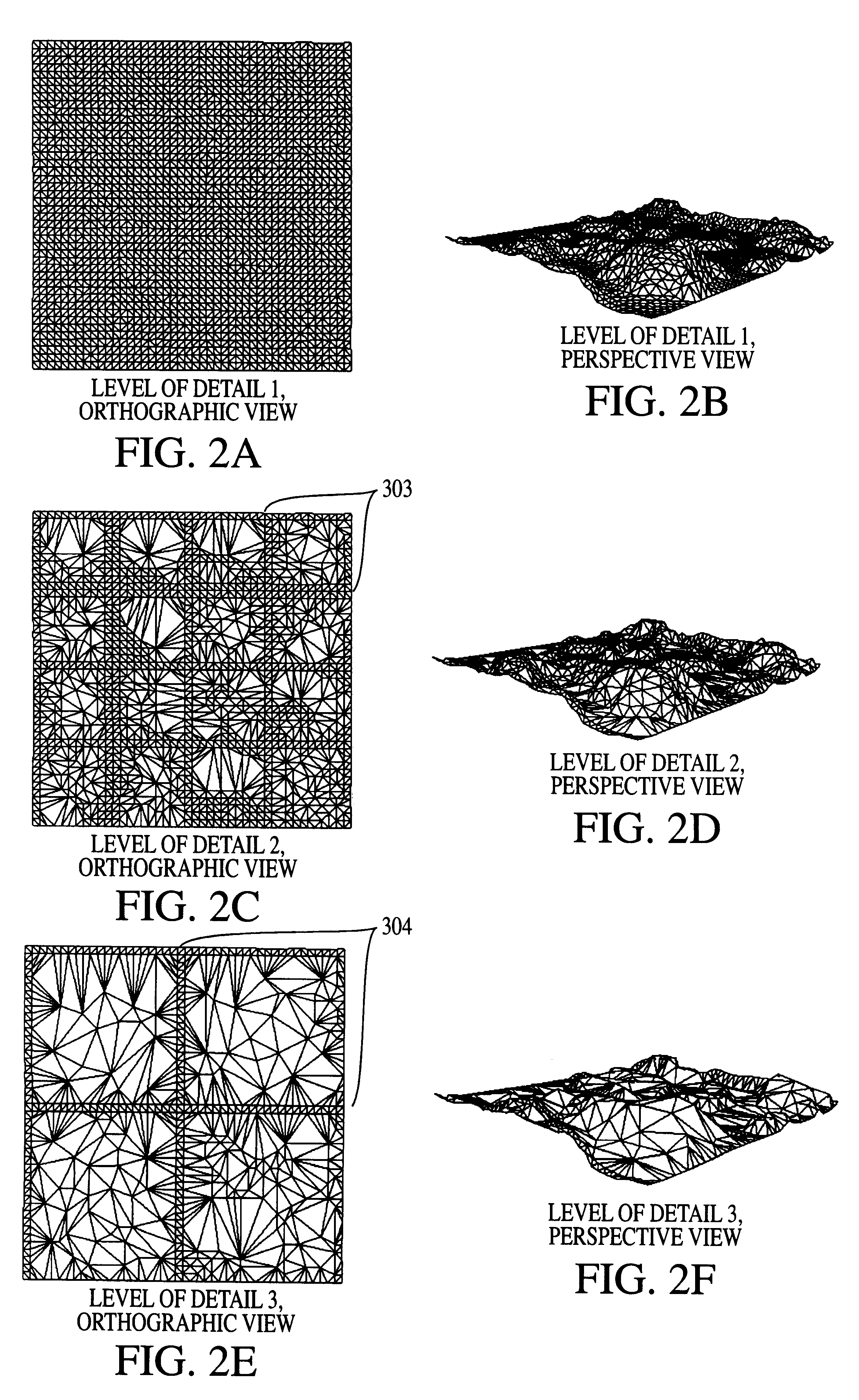Method for automatically smoothing object level of detail transitions for regular objects in a computer graphics display system
a computer graphics and display system technology, applied in the field of computer graphics rendering systems, can solve the problems of affecting the performance of the computer graphics system, affecting the quality of the object, and drastically altering the polygonal or pixel requirements
- Summary
- Abstract
- Description
- Claims
- Application Information
AI Technical Summary
Problems solved by technology
Method used
Image
Examples
Embodiment Construction
Referring now to the drawings, and more particularly to FIG. 2, there is shown orthographic and perspective views for each level of detail of an implementation of the invention using three levels of detail for a terrain database. The invention is practiced in the following steps.
1) Create a base regular grid of 3D datapoints. This will comprise the total vertex list.
2) Create conformally optimal polygonalization of this vertex list.
3) Create desired partitioning for first level reduction of database into regular grids, called sectors.
4) Perform conformal decimation, fixing points on the perimeter of each sector grid. The second level of detail is often decimated only to the point of eliminating coplanar polygons. This reduces polygons while avoiding geometric anomalies while transitioning the near zone to texture detail.
5) For successive levels of detail reduction, create higher level groupings of fixed grids, such as quads of the previous level (as shown in FIG. 2, where each of th...
PUM
 Login to View More
Login to View More Abstract
Description
Claims
Application Information
 Login to View More
Login to View More - R&D
- Intellectual Property
- Life Sciences
- Materials
- Tech Scout
- Unparalleled Data Quality
- Higher Quality Content
- 60% Fewer Hallucinations
Browse by: Latest US Patents, China's latest patents, Technical Efficacy Thesaurus, Application Domain, Technology Topic, Popular Technical Reports.
© 2025 PatSnap. All rights reserved.Legal|Privacy policy|Modern Slavery Act Transparency Statement|Sitemap|About US| Contact US: help@patsnap.com



